Understanding IT Compliance: Scope, Benefits, and Challenges

What is IT Compliance?
Data breaches and cyber threats are increasingly common, organizations must navigate a complex landscape of regulations and standards to safeguard their operations and customer data. This navigation is where IT compliance comes into play. IT compliance refers to the process of ensuring that information technology systems and practices within an organization adhere to specific laws, regulations, and standards set by government bodies, industry groups, and other regulatory entities. This compliance is not just a legal obligation but also a crucial aspect of maintaining trust with customers and stakeholders.
Understanding IT compliance involves delving into its definitions, scope, significance, and how it differs from but complements IT security. As we explore these aspects, we will also uncover why IT compliance is vital for organizations of all sizes and sectors, from healthcare and finance to retail and technology.
Definition and Scope of IT Compliance
IT compliance can be broadly defined as the adherence to a set of rules and guidelines governing the use and management of information technology within an organization. These rules are often stipulated by external entities such as regulatory bodies (like the GDPR in Europe or the HIPAA in the US), industry standards organizations (such as ISO or PCI DSS), and even internal policies that an organization might implement to safeguard its operations.
The scope of IT compliance is extensive, encompassing various domains such as data privacy, cybersecurity, and information governance. For instance, in the realm of data privacy, compliance may involve following regulations that dictate how personal information should be collected, stored, and processed. This includes understanding the nuances of laws like the California Consumer Privacy Act (CCPA) or the General Data Protection Regulation (GDPR), which set stringent requirements for data handling and grant significant rights to individuals regarding their personal information.
On the cybersecurity front, IT compliance often requires organizations to implement measures that protect their systems from unauthorized access, data breaches, and other cyber threats. This might involve adhering to standards such as the National Institute of Standards and Technology (NIST) Cybersecurity Framework, which provides a policy framework of computer security guidance for how private sector organizations can assess and improve their ability to prevent, detect, and respond to cyber attacks.
Importance of IT Compliance in Organizations
The importance of IT compliance cannot be overstated, as it plays a pivotal role in protecting organizations from a myriad of risks, including legal penalties, financial losses, and reputational damage. Firstly, adhering to IT compliance requirements helps organizations avoid legal ramifications associated with non-compliance. Regulatory bodies across various jurisdictions impose significant fines and sanctions on entities that fail to meet their obligations. For example, under the GDPR, companies can face fines of up to 4% of their annual global turnover or €20 million, whichever is higher, for serious infringements.
Beyond legal considerations, IT compliance is crucial for mitigating operational risks and safeguarding sensitive information. In an era where cyber threats are increasingly sophisticated, compliance with established cybersecurity standards ensures that organizations have robust defenses in place to protect against data breaches, ransomware attacks, and other forms of cybercrime. This not only helps in preventing immediate financial losses but also preserves the long-term trust of customers and partners.
IT Compliance vs. IT Security: What's the Difference?
While IT compliance and IT security are closely related, they are distinct concepts that serve different purposes within an organization's IT framework. Understanding the difference between the two is crucial for developing a comprehensive strategy that addresses both regulatory requirements and security needs.
IT compliance is primarily concerned with ensuring that an organization meets specific external and internal requirements regarding the management and use of IT. These requirements often come from laws, regulations, and standards that dictate how information should be handled and protected. Compliance efforts typically involve conducting regular audits and assessments to verify that policies and procedures align with the relevant standards. For example, a company that handles payment card information must comply with the Payment Card Industry Data Security Standard (PCI DSS), which sets forth requirements for securing such data.
Importance of IT Compliance in Modern Businesses
In the ever-evolving landscape of technology and regulation, IT compliance has emerged as a cornerstone of successful business operations. Modern businesses, regardless of their size or industry, face an increasing array of regulations and standards designed to protect data, ensure privacy, and secure IT systems. Compliance with these requirements is not merely a bureaucratic hurdle; it is a strategic imperative that can yield significant benefits. Understanding the importance of IT compliance involves recognizing its multifaceted role in protecting sensitive data, avoiding legal repercussions, enhancing customer trust, improving operational efficiency, reducing security risks, and promoting best practices across the organization.
Protects Sensitive Data and Privacy
At the heart of IT compliance is the critical task of protecting sensitive data and ensuring privacy. Modern businesses handle vast amounts of data, including personal information about customers, employees, and partners. Compliance frameworks such as the General Data Protection Regulation (GDPR) and the Health Insurance Portability and Accountability Act (HIPAA) set stringent requirements for how this data should be collected, processed, stored, and shared. By adhering to these regulations, businesses can safeguard the confidentiality, integrity, and availability of sensitive information. This not only protects individuals from potential harm such as identity theft and fraud but also helps businesses avoid the operational disruptions and reputational damage that can result from data breaches and privacy violations. Compliance with data protection regulations thus serves as a fundamental component of a company’s data management strategy, ensuring that data is handled responsibly and securely.

Avoids Legal Penalties and Fines
One of the most immediate and tangible benefits of IT compliance is the avoidance of legal penalties and fines. Regulatory bodies around the world impose strict requirements on how businesses must manage and secure their IT systems and data. Non-compliance with these regulations can lead to significant financial penalties, legal action, and sanctions that can severely impact a company’s bottom line and reputation. For instance, under the GDPR, organizations can face fines of up to €20 million or 4% of their annual global revenue for serious violations. Similarly, breaches of the Payment Card Industry Data Security Standard (PCI DSS) can result in hefty fines from payment processors and card schemes. By proactively ensuring compliance, businesses can mitigate the risk of such punitive measures and avoid the associated costs and operational disruptions. This legal safeguard is crucial not only for financial stability but also for maintaining trust with regulators and stakeholders.
Enhances Customer Trust and Loyalty
In an era where data breaches and cyber threats are commonplace, customers are increasingly concerned about how their personal information is managed and protected. Demonstrating a commitment to IT compliance is a powerful way for businesses to build and enhance customer trust and loyalty. When companies adhere to recognized standards and regulations, they signal to their customers that they take data protection seriously and are dedicated to maintaining high levels of security and privacy. This can differentiate a business in the competitive marketplace, where trust and reputation are key drivers of consumer choice. Furthermore, compliance with data protection regulations often empowers customers with greater control over their data, enhancing their confidence in the business relationship. For example, regulations like the GDPR provide individuals with rights such as data access, correction, and deletion, which can significantly boost customer satisfaction and loyalty when businesses effectively support these rights.
Improves Operational Efficiency
Compliance with IT regulations and standards can also drive improvements in operational efficiency. To meet compliance requirements, businesses often need to implement structured processes and robust controls for managing their IT systems and data. These measures can streamline operations, reduce redundancies, and enhance overall efficiency. For example, standardizing data management practices to comply with regulations like GDPR or CCPA can simplify data handling and improve data quality. Similarly, adopting best practices in cybersecurity, as mandated by frameworks like NIST or ISO 27001, can lead to more efficient and effective security operations. Compliance efforts can also foster a culture of continuous improvement, where regular audits and assessments identify areas for operational enhancements. By embedding compliance into their operational processes, businesses not only meet regulatory obligations but also create more resilient and agile operations that can adapt to changing business needs and technological advancements.

Reduces the Risk of Security Breaches
Security breaches can have devastating consequences for businesses, including financial losses, reputational damage, and operational disruptions. IT compliance plays a crucial role in reducing the risk of such breaches by ensuring that robust security measures are in place. Compliance standards often require organizations to implement specific controls and practices designed to protect against unauthorized access, data breaches, and other cyber threats. For instance, PCI DSS mandates stringent security measures for handling payment card information, while the NIST Cybersecurity Framework provides comprehensive guidance on managing cybersecurity risks. By adhering to these standards, businesses can significantly strengthen their security posture and reduce the likelihood of breaches. Moreover, compliance frameworks often require regular security assessments and audits, which can help organizations identify and address vulnerabilities before they are exploited. This proactive approach to security is essential in an environment where cyber threats are constantly evolving and becoming more sophisticated.
Promotes Best Practices and Standardization
Finally, IT compliance promotes the adoption of best practices and standardization across the organization. Compliance requirements are often based on established best practices in data management, cybersecurity, and IT governance. By aligning their operations with these standards, businesses can benefit from proven methodologies and frameworks that enhance efficiency, security, and reliability. Standardization through compliance can also facilitate better integration and interoperability of IT systems, which is particularly important in large and complex organizations. For example, following standardized protocols for data handling and security can simplify collaboration and data sharing across different departments and business units. Additionally, compliance with international standards like ISO 27001 can support global business operations by providing a consistent approach to managing information security. This alignment with best practices not only ensures compliance with regulatory requirements but also drives continuous improvement and innovation in IT operations.
Risks of Non-Compliance
In the rapidly evolving digital landscape, businesses must navigate a complex web of regulations and standards that govern their IT operations. Failing to comply with these regulations can expose organizations to a multitude of risks that can have severe and far-reaching consequences. Non-compliance not only jeopardizes legal standing but also impacts data security, financial health, operational stability, and business relationships. Understanding these risks is crucial for organizations to prioritize compliance efforts and mitigate potential damages. This section delves into the various risks associated with non-compliance, including legal penalties, data breaches, loss of customer trust, financial losses, operational disruptions, regulatory scrutiny, damaged relationships, loss of business credentials, and increased insurance costs.
Legal Penalties and Fines
One of the most immediate and severe risks of non-compliance is the imposition of legal penalties and fines. Regulatory bodies across various sectors and jurisdictions enforce stringent requirements on data protection, cybersecurity, and operational practices. Failure to adhere to these requirements can result in substantial financial penalties. For instance, under the General Data Protection Regulation (GDPR), companies that fail to comply can face fines of up to €20 million or 4% of their annual global revenue, whichever is higher. Similarly, non-compliance with the Health Insurance Portability and Accountability Act (HIPAA) can lead to fines ranging from $100 to $50,000 per violation, with an annual maximum of $1.5 million. These penalties are not only financially burdensome but also signal serious regulatory non-compliance, which can damage a company's reputation and operational standing.
Data Breaches and Cyberattacks
Non-compliance with IT security regulations significantly increases the risk of data breaches and cyberattacks. Compliance standards often mandate specific security measures that protect against unauthorized access and data breaches. When organizations fail to meet these requirements, they leave themselves vulnerable to cyber threats. Data breaches can result in the unauthorized exposure of sensitive information, including customer data, intellectual property, and financial records. This not only compromises the integrity and confidentiality of data but also exposes the organization to further legal liabilities and financial losses. Cyberattacks, such as ransomware and phishing, can cripple business operations and lead to significant recovery costs. For example, the 2017 Equifax data breach, which resulted from non-compliance with basic security practices, exposed the personal information of 147 million consumers and cost the company over $1.4 billion in settlements and fines.
Loss of Customer Trust and Reputation
Customer trust is a critical asset for any business, and non-compliance can severely erode this trust. When organizations fail to protect sensitive data or comply with regulations, it sends a clear message to customers that their privacy and security are not prioritized. This can lead to a significant loss of customer confidence and loyalty, which is often difficult to rebuild. Consumers are increasingly aware of privacy issues, a reputation for non-compliance can be particularly damaging. High-profile data breaches and regulatory penalties frequently attract negative media attention, further tarnishing a company's reputation. For example, the Facebook-Cambridge Analytica scandal in 2018 severely damaged Facebook’s reputation and led to widespread criticism over its data handling practices. This reputational damage can result in lost business opportunities and a diminished brand image.
Financial Losses and Increased Costs
Non-compliance can have profound financial implications beyond the immediate cost of penalties and fines. Organizations may incur significant expenses related to breach remediation, including legal fees, compensation to affected customers, and the costs of implementing corrective measures to address compliance failures. These unexpected costs can strain financial resources and impact profitability. Moreover, businesses may face increased operational costs as they attempt to rectify compliance issues and strengthen their security posture. For instance, after a data breach, companies often need to invest in additional security infrastructure, conduct extensive audits, and engage in public relations efforts to manage the fallout. These financial burdens can be substantial and have long-term effects on an organization's financial health.
Operational Disruptions
Non-compliance can lead to significant operational disruptions, hindering a company's ability to conduct business smoothly. Regulatory breaches may necessitate urgent and extensive remediation efforts, diverting resources and attention from core business activities. For example, in the event of a data breach, an organization may need to shut down affected systems, conduct forensic investigations, and implement new security measures, all of which can disrupt normal operations. Additionally, non-compliance can result in the suspension of critical business functions or services until issues are resolved, further impacting productivity and revenue. These disruptions can be particularly damaging for businesses that rely heavily on continuous IT operations, such as e-commerce platforms or financial services providers.
Regulatory Investigations and Audits
Non-compliance often triggers regulatory investigations and audits, which can be time-consuming, costly, and intrusive. Regulatory authorities may initiate investigations to determine the extent of non-compliance and assess whether additional enforcement actions are warranted. These investigations can involve extensive document reviews, interviews with employees, and inspections of IT systems. They can also lead to mandatory audits that require organizations to demonstrate their compliance with relevant regulations and standards. The process of responding to investigations and audits can be disruptive and require significant resources. Moreover, the findings of these regulatory reviews can result in further penalties, mandates for corrective actions, and ongoing compliance monitoring, all of which add to the operational and financial burden on the organization.
Damage to Business Relationships
Non-compliance can have a detrimental impact on business relationships, particularly with partners, suppliers, and customers who expect high standards of data protection and operational integrity. Many business agreements include compliance requirements, and failure to meet these obligations can lead to strained or terminated partnerships. For instance, suppliers may be reluctant to engage with a non-compliant organization due to concerns about shared liability or reputational risk. Similarly, customers, particularly in B2B contexts, may choose to sever ties with companies that cannot demonstrate compliance with industry standards and regulatory requirements. This loss of business relationships can result in decreased revenue and limit future growth opportunities. Additionally, non-compliance can hinder a company's ability to enter into new markets or secure new contracts, as compliance with relevant regulations is often a prerequisite for doing business.
Loss of Business Licenses and Certifications
In some industries, non-compliance can lead to the revocation of critical business licenses and certifications. Regulatory bodies may suspend or revoke licenses required to operate legally if an organization is found to be in significant non-compliance. For example, healthcare providers could lose their accreditation if they fail to comply with HIPAA requirements, and financial institutions might be barred from operating if they do not meet regulatory standards set by financial authorities. Similarly, non-compliance with industry-specific standards like ISO 27001 or PCI DSS can result in the loss of certifications that are essential for business operations. Losing these licenses and certifications can halt business activities, erode customer confidence, and lead to long-term operational and financial challenges.
Increased Insurance Premiums
Insurance companies often adjust premiums based on an organization's risk profile, and non-compliance can significantly increase perceived risk. When businesses fail to comply with IT and data protection regulations, they are more susceptible to data breaches and cyber incidents, which can result in higher claims. As a result, insurers may increase premiums or impose stricter coverage terms for companies with a history of non-compliance or regulatory issues. Higher insurance costs add to the financial burden of non-compliance and can impact a company’s ability to manage risk effectively. Furthermore, some insurers may refuse to provide coverage to non-compliant organizations altogether, leaving them exposed to potential financial liabilities from future incident
Top Regulatory Compliance Frameworks
Navigating the complex landscape of regulatory compliance is essential for organizations to protect sensitive data, maintain operational integrity, and avoid legal pitfalls. Various compliance frameworks have been established to help organizations adhere to specific industry standards and regulatory requirements. These frameworks provide structured guidelines for managing and securing information technology systems, ensuring that businesses operate within legal and ethical boundaries. Below, we explore some of the top regulatory compliance frameworks that are critical for modern businesses.
GDPR
The General Data Protection Regulation (GDPR) is a comprehensive data protection law enacted by the European Union that has a broad impact on how organizations worldwide manage personal data. Effective since May 25, 2018, GDPR sets stringent requirements for collecting, processing, and storing personal data of EU residents. It grants individuals significant rights over their data, including the right to access, correct, and delete their information. GDPR applies to any organization, regardless of location, that handles the data of EU citizens, making its reach global. Non-compliance can result in severe penalties, including fines up to €20 million or 4% of annual global revenue, whichever is higher. To comply with GDPR, businesses must implement robust data protection measures, conduct regular risk assessments, and ensure transparency in their data practices.
HIPAA
The Health Insurance Portability and Accountability Act (HIPAA) is a U.S. law designed to protect the privacy and security of health information. Enacted in 1996, HIPAA applies to healthcare providers, insurers, and their business associates who handle protected health information (PHI). The regulation mandates the implementation of administrative, physical, and technical safeguards to ensure the confidentiality, integrity, and availability of PHI. Key components of HIPAA include the Privacy Rule, which establishes standards for the use and disclosure of PHI, and the Security Rule, which sets requirements for safeguarding electronic PHI. Non-compliance with HIPAA can result in substantial fines and legal actions. To adhere to HIPAA, organizations must establish comprehensive privacy and security policies, train their workforce on compliance requirements, and regularly audit their practices.
CMMC
The Cybersecurity Maturity Model Certification (CMMC) is a framework established by the U.S. Department of Defense (DoD) to enhance the cybersecurity posture of its supply chain. CMMC combines various cybersecurity standards and best practices into a unified standard for DoD contractors and subcontractors. The framework is structured across five maturity levels, each with specific processes and practices that build upon the previous level. CMMC requires organizations to implement measures such as access controls, incident response, and security assessments to protect sensitive defense information. Certification is mandatory for companies wishing to bid on DoD contracts, and compliance is verified through independent assessments. By adhering to CMMC, organizations not only meet DoD requirements but also strengthen their overall cybersecurity capabilities.
NIST
The National Institute of Standards and Technology (NIST) provides a widely recognized set of guidelines and standards for managing and protecting information systems. The NIST Cybersecurity Framework, in particular, offers a comprehensive approach to identifying, protecting, detecting, responding to, and recovering from cyber threats. It is designed to be flexible and adaptable, making it applicable to organizations of all sizes and sectors. The framework includes categories and subcategories of cybersecurity activities, allowing businesses to assess their current capabilities and develop strategies to enhance their security posture. NIST’s Special Publication 800-53 is another critical component, detailing security and privacy controls for federal information systems and organizations. Compliance with NIST frameworks helps organizations mitigate risks, ensure regulatory adherence, and improve their overall cybersecurity resilience.
HIPAA
The Health Insurance Portability and Accountability Act (HIPAA) emphasizes the importance of protecting health information. As a U.S. regulation, it applies specifically to healthcare entities and their business associates. HIPAA’s Privacy Rule restricts the use and disclosure of personal health information, while the Security Rule mandates safeguards for electronic health records. Ensuring compliance with HIPAA involves establishing strict access controls, conducting regular security assessments, and training employees on privacy policies. Violations of HIPAA can lead to severe penalties, including significant fines and criminal charges. For healthcare organizations, HIPAA compliance is not just about legal adherence but also about maintaining patient trust and safeguarding sensitive health information from breaches and unauthorized access.

PCI DSS
The Payment Card Industry Data Security Standard (PCI DSS) is a set of security standards designed to ensure that all companies that accept, process, store, or transmit credit card information maintain a secure environment. Established by the Payment Card Industry Security Standards Council, PCI DSS applies to organizations of all sizes that handle cardholder data. The standard comprises 12 requirements, including maintaining secure networks, protecting cardholder data, managing vulnerabilities, and implementing strong access controls. Non-compliance with PCI DSS can result in significant fines, increased transaction fees, and even the loss of the ability to process credit card payments. Achieving PCI DSS compliance involves regular security assessments, implementing robust security measures, and ensuring continuous monitoring and maintenance of systems handling payment card information.
SOX
The Sarbanes-Oxley Act (SOX) is a U.S. federal law that aims to protect investors by improving the accuracy and reliability of corporate disclosures. Enacted in 2002 in response to financial scandals like Enron and WorldCom, SOX imposes stringent requirements on public companies, including stringent internal controls over financial reporting. Section 404 of SOX mandates that management and external auditors establish and report on the adequacy of these internal controls. Compliance with SOX requires organizations to document financial processes, conduct regular audits, and implement robust controls to prevent fraud and ensure the integrity of financial data. Non-compliance can lead to severe penalties, including fines and imprisonment for executives.
ISO/IEC 27001
ISO/IEC 27001 is an international standard for information security management systems (ISMS). It provides a systematic approach to managing sensitive company information, ensuring it remains secure and available. ISO 27001 is applicable to organizations of all sizes and across all sectors, offering a comprehensive framework for establishing, implementing, maintaining, and continually improving an ISMS. The standard covers areas such as risk management, security controls, and compliance with legal and regulatory requirements.
Steps to Achieve IT Compliance
Achieving IT compliance is a critical endeavor that requires a strategic and methodical approach. Organizations must navigate a complex landscape of regulations and standards to ensure their IT systems and data management practices meet legal and industry-specific requirements. This process involves a series of steps, from conducting initial assessments to implementing comprehensive compliance strategies and training programs. By following these steps, businesses can effectively manage their compliance obligations, mitigate risks, and enhance their overall security posture.
Conduct a Comprehensive Assessment
incorporate this comment in the text: comment: Do an assessment before your audit. Audits are expensive. You can do an assessment with RedZone which will give you the steps, tools and budget needed to get perform well for your audit Text: The first step in achieving IT compliance is conducting a comprehensive assessment of your organization’s current IT environment. This assessment serves as a foundational exercise to understand the existing state of your IT systems, data management practices, and overall security posture. It involves identifying and documenting all IT assets, including hardware, software, networks, and data repositories. Additionally, the assessment should evaluate how these assets are used, who has access to them, and what controls are currently in place to protect them.
A thorough assessment will also include a review of applicable regulatory requirements and industry standards relevant to your business. This review helps identify the specific compliance obligations your organization must meet, such as GDPR for data protection, HIPAA for healthcare information, or PCI DSS for payment card data. Understanding these requirements is crucial for determining the gaps between your current practices and what is needed to achieve compliance. Moreover, the assessment should involve a risk analysis to identify potential vulnerabilities and threats that could impact compliance.
Conducting a Compliance Audit
After the initial assessment, the next step is to conduct a formal compliance audit. A compliance audit is a systematic evaluation of an organization’s adherence to regulatory requirements and internal policies. This audit can be conducted internally by a dedicated compliance team or externally by independent auditors specializing in compliance and regulatory standards.
The audit process involves reviewing and analyzing documentation, processes, and controls to verify that they meet the required standards. This includes examining security policies, access controls, incident response procedures, and data management practices. Auditors will often test these controls to ensure they are functioning as intended and effectively mitigating risks.
Developing a Compliance Strategy
Based on the findings from the assessment and audit, the next step is to develop a robust compliance strategy. This strategy should outline the specific actions and initiatives that your organization will undertake to achieve and maintain compliance. It serves as a roadmap for implementing necessary controls, policies, and procedures to meet regulatory obligations.
The compliance strategy should begin with setting clear compliance objectives aligned with your organization’s risk profile and regulatory requirements. These objectives might include enhancing data protection measures, improving incident response capabilities, or achieving certification for relevant standards such as ISO 27001 or PCI DSS.
Training and Awareness Programs for Compliance
An essential component of achieving IT compliance is fostering a culture of awareness and accountability throughout the organization. This is achieved through comprehensive training and awareness programs that educate employees about compliance requirements, their roles in maintaining compliance, and best practices for data security and privacy.
Training programs should be tailored to different roles within the organization, ensuring that all employees understand their specific responsibilities related to compliance. For example, IT staff may need detailed training on implementing security controls and managing data breaches, while general employees might focus on recognizing phishing attempts and safeguarding personal information.
In addition to formal training sessions, ongoing awareness initiatives are critical for keeping compliance top-of-mind. These initiatives can include regular updates on regulatory changes, tips for maintaining data security, and reminders of company policies.
IT Compliance & Data Governance
Businesses face an ever-evolving landscape of regulatory requirements and data governance challenges. Ensuring IT compliance and robust data governance is essential not only to protect sensitive information but also to maintain the trust of customers and stakeholders. Organizations are now more than ever focused on adhering to legal requirements, managing data effectively, and mitigating risks associated with data breaches and compliance violations. This section delves into the core components of IT compliance and data governance, exploring why they are critical for businesses of all sizes and industries.
Email Security
Email remains a fundamental tool for business communication, but it also poses significant security risks. Protecting email systems from threats such as phishing, malware, and unauthorized access is paramount. Email security encompasses various measures including encryption, secure email gateways, and user training to prevent data breaches and cyber-attacks. Companies must adopt robust email security practices to ensure that confidential information transmitted via email is not intercepted or compromised. With the rise in sophisticated phishing attacks, it’s crucial for organizations to continually update their email security protocols and educate employees on recognizing potential threats.
Threat Monitoring
Proactive threat monitoring is a vital component of a comprehensive IT compliance and data governance strategy. This process involves continuously observing and analyzing network activities to detect and respond to potential security threats in real-time. Effective threat monitoring helps organizations identify unusual patterns or behaviors that could indicate a cyber-attack or data breach. By employing advanced tools like intrusion detection systems (IDS), security information and event management (SIEM) systems, and artificial intelligence (AI), businesses can stay ahead of cybercriminals. Implementing strong threat monitoring practices enables companies to not only meet regulatory requirements but also protect their critical data assets from emerging threats.
Mobile Security
As the use of mobile devices in the workplace continues to grow, so do the associated security risks. Mobile security focuses on safeguarding smartphones, tablets, and other portable devices against unauthorized access, malware, and data leakage. This includes implementing policies for device management, encryption, secure app development, and user authentication. With the increasing trend of remote work and BYOD (Bring Your Own Device) policies, ensuring mobile security is more important than ever. Companies must establish robust mobile security protocols to protect sensitive business information and ensure compliance with data protection regulations. Regularly updating software and educating employees on safe mobile practices are key steps in maintaining a secure mobile environment.
Business Continuity
Business continuity planning is essential to ensure that an organization can continue to operate during and after a crisis. This involves developing strategies and procedures to recover from disruptions such as cyber-attacks, natural disasters, or system failures. Effective business continuity plans include disaster recovery, data backup, and incident response protocols. By preparing for potential disruptions, companies can minimize downtime, protect their data, and maintain operational integrity. Business continuity is a critical aspect of IT compliance and data governance, as it ensures that organizations can fulfill their obligations to customers and stakeholders, even in adverse conditions. Regular testing and updating of continuity plans are crucial to adapt to evolving risks and ensure organizational resilience.

Challenges in Maintaining IT Compliance
Maintaining IT compliance is a multifaceted endeavor that demands vigilance, expertise, and resources. Organizations, irrespective of their size, face a plethora of challenges in ensuring that their IT infrastructure aligns with regulatory requirements. This section delves into the primary obstacles companies encounter in their quest to maintain IT compliance.
Complex Regulatory Environment
Navigating the complex regulatory landscape is one of the foremost challenges in maintaining IT compliance. Regulations like GDPR, HIPAA, and CCPA each have unique requirements, often specific to certain industries or regions. For example, GDPR focuses heavily on data protection for EU citizens, imposing stringent requirements on data processing and storage. Similarly, HIPAA mandates rigorous standards for the protection of health information in the United States.
Organizations must interpret and apply these diverse regulations accurately, which can be particularly daunting for those operating across multiple jurisdictions. The complexity is further exacerbated when regulations overlap or contradict each other. This intricate web of laws necessitates a comprehensive understanding and meticulous application to ensure compliance. Failing to navigate this regulatory labyrinth effectively can lead to significant penalties, reputational damage, and operational disruptions.
Rapidly Changing Laws and Standards
The rapid evolution of laws and standards presents another significant hurdle for IT compliance. Regulations frequently evolve to keep pace with technological advancements and emerging threats. For instance, the California Consumer Privacy Act (CCPA) has seen several amendments since its inception, each introducing new requirements that organizations must adhere to.
Staying updated with these changes and ensuring that all systems and processes align with the latest standards is an ongoing challenge. Organizations must establish robust monitoring and update mechanisms to track regulatory changes and implement necessary adjustments swiftly. This dynamic nature of compliance demands agility and a proactive approach to avoid falling out of compliance as regulations evolve.
Resource Constraints
Resource constraints, both financial and human, significantly impact an organization's ability to maintain IT compliance. Compliance initiatives often require substantial investments in technology, personnel, and training. Smaller organizations or those with limited budgets may struggle to allocate the necessary resources to build and sustain a robust compliance program.
Moreover, the cost of compliance can be particularly burdensome for startups and small businesses, which may not have the same financial flexibility as larger enterprises. This financial strain can lead to inadequate compliance measures, increasing the risk of violations and penalties. Balancing the need for compliance with other business priorities is a delicate act, and resource limitations often complicate this balance.
Lack of Skilled Personnel
The shortage of skilled personnel is a critical challenge in the realm of IT compliance. Maintaining compliance requires expertise in both IT and regulatory domains, but finding professionals who possess this dual knowledge is increasingly difficult. The demand for compliance specialists has surged in recent years, outpacing the supply of qualified candidates.
Organizations often face difficulties in hiring and retaining individuals with the requisite skills to manage and oversee compliance efforts effectively. This skills gap can lead to reliance on underqualified staff or the need to outsource compliance functions, which can be costly and may not always align perfectly with the organization's specific needs. Addressing this shortage is crucial for ensuring that compliance initiatives are both effective and sustainable.
Data Security and Privacy Issues
Data security and privacy are at the heart of many regulatory frameworks, making them a significant focus for IT compliance. Ensuring the protection of sensitive data against breaches and unauthorized access is a complex and ongoing challenge. With the increasing frequency and sophistication of cyberattacks, organizations must continuously enhance their security measures to comply with regulations like GDPR and CCPA.
Compliance with data security and privacy requirements involves implementing robust encryption, access controls, and incident response protocols. However, these measures can be technically demanding and resource-intensive. Moreover, organizations must ensure that their data protection practices extend to all areas of their operations, including third-party vendors and cloud services, to avoid potential compliance breaches.
Inconsistent or Outdated Policies
Many organizations struggle with maintaining consistent and up-to-date compliance policies. As regulations evolve, it is essential that internal policies and procedures are regularly reviewed and updated to reflect the latest requirements. However, this task is often overlooked or deprioritized due to other pressing business needs.
Inconsistent or outdated policies can create gaps in compliance and increase the risk of violations. For instance, a policy that does not align with the latest data protection regulations can leave the organization vulnerable to penalties and legal challenges. Ensuring that policies are regularly reviewed and updated is critical for maintaining compliance and mitigating risks associated with regulatory changes.
Technology Integration Challenges
Integrating new technologies while maintaining compliance is a formidable challenge for many organizations. As businesses adopt advanced technologies such as cloud computing, AI, and IoT, they must ensure that these innovations do not compromise their compliance posture. Each new technology brings its own set of compliance considerations, requiring careful evaluation and implementation.
For example, migrating to cloud services involves assessing the cloud provider's compliance with relevant regulations and ensuring that data transfer and storage practices meet regulatory standards. Similarly, deploying AI solutions necessitates evaluating how these systems handle data processing and decision-making to ensure compliance with ethical and legal requirements. Balancing the benefits of new technologies with compliance obligations is a delicate and ongoing process that requires continuous oversight and adjustment.
The Role of IT Compliance in Cybersecurity
In the digital age, IT compliance and cybersecurity are intrinsically linked, with both playing crucial roles in protecting an organization's data and systems from threats. IT compliance involves adhering to laws, regulations, and industry standards that govern how data is managed and secured. Cybersecurity, on the other hand, focuses on safeguarding systems and information from cyber threats. Together, these two domains form a robust framework that helps organizations mitigate risks and ensure the integrity of their data. This section explores the critical role that IT compliance plays in enhancing cybersecurity.
Protecting Data and Privacy through IT Compliance
One of the primary objectives of IT compliance is to protect sensitive data and ensure privacy. Regulations like the General Data Protection Regulation (GDPR) and the California Consumer Privacy Act (CCPA) set stringent standards for data protection, requiring organizations to implement comprehensive measures to secure personal and sensitive information. Compliance with these regulations not only helps organizations avoid legal penalties but also strengthens their cybersecurity posture.
IT compliance mandates the implementation of technical and organizational measures to protect data from unauthorized access, alteration, and destruction. For instance, GDPR requires organizations to adopt encryption and pseudonymization to protect personal data. These measures reduce the risk of data breaches by making data less accessible and usable to unauthorized individuals. Additionally, IT compliance frameworks often require regular security assessments and audits, helping organizations identify and address vulnerabilities before they can be exploited by cybercriminals.
Integrating IT Compliance with Cybersecurity Measures
Integrating IT compliance with cybersecurity measures is essential for building a resilient defense against cyber threats. While IT compliance provides a structured framework for protecting data, cybersecurity measures are the practical tools and strategies used to implement this framework. By aligning these two areas, organizations can create a cohesive and comprehensive security strategy.
Effective integration begins with understanding the specific compliance requirements relevant to the organization and mapping these to cybersecurity practices. For example, compliance with the Health Insurance Portability and Accountability Act (HIPAA) necessitates robust access controls to protect health information. Implementing cybersecurity measures such as multi-factor authentication (MFA) and role-based access control (RBAC) can help meet these requirements by ensuring that only authorized personnel can access sensitive data.
Additionally, IT compliance often involves regular monitoring and reporting of security incidents. Integrating cybersecurity tools like Security Information and Event Management (SIEM) systems can streamline this process by providing real-time monitoring and alerting capabilities. SIEM systems can collect and analyze security data from across the organization, helping to detect and respond to potential threats more efficiently.
Tools and Technologies for IT Compliance
Navigating the intricate landscape of IT compliance requires more than just a theoretical understanding of regulatory requirements. Organizations must leverage specialized tools and technologies designed to streamline compliance processes, enhance data security, and ensure adherence to regulatory standards. This section delves into some of the most popular IT compliance tools and software available and provides guidance on how businesses can evaluate and select the most suitable solutions for their needs.

Popular IT Compliance Tools and Software
The market for IT compliance tools and software is vast, offering a range of solutions tailored to different regulatory frameworks and business requirements. These tools are designed to automate and simplify the complex tasks associated with maintaining compliance, from data monitoring and reporting to risk assessment and incident response. Here are some of the most popular IT compliance tools and software currently used by organizations:
- Symantec Control Compliance Suite: This comprehensive suite provides a robust framework for managing IT risk and compliance across the enterprise. It offers automated assessment and reporting capabilities that help organizations measure compliance against a wide range of regulatory requirements, including PCI DSS, HIPAA, and SOX. The suite also includes modules for risk management, policy compliance, and threat assessment, making it a versatile choice for large enterprises.
- RSA Archer: RSA Archer is a leading platform for governance, risk management, and compliance (GRC). It enables organizations to manage and mitigate risk, demonstrate compliance, and automate business processes. With its flexible, configurable modules, RSA Archer can support a wide variety of compliance initiatives, from data privacy to operational risk management. Its centralized dashboard provides a comprehensive view of compliance status, facilitating better decision-making and reporting.
- Vanta: Vanta is a cloud-based compliance automation platform that focuses on simplifying the process of achieving and maintaining compliance with standards like SOC 2, ISO 27001, and GDPR. Vanta automates evidence collection and risk monitoring, providing continuous compliance assurance. Its user-friendly interface and integration capabilities with other tools make it particularly popular among startups and small to medium-sized enterprises.
- TrustArc: Specializing in privacy compliance, TrustArc offers a suite of solutions designed to help organizations manage their data protection obligations under regulations such as GDPR, CCPA, and HIPAA. TrustArc's tools include data inventory and mapping, risk assessment, consent management, and ongoing monitoring of compliance status. Its emphasis on privacy makes it an essential tool for organizations handling large volumes of personal data.
These tools, among others, provide essential capabilities that facilitate the complex process of achieving and maintaining IT compliance. They help automate routine tasks, reduce the risk of human error, and provide organizations with the insights needed to stay ahead of compliance requirements.
Evaluating IT Compliance Solutions for Your Business
Selecting the right IT compliance solution for your business is a critical decision that can significantly impact your ability to maintain compliance and protect sensitive data. With the myriad of options available, it's important to approach this decision methodically, considering several key factors to ensure you choose a solution that aligns with your specific needs and capabilities.
- Understand Your Compliance Requirements: The first step in evaluating IT compliance solutions is to clearly understand the specific regulations and standards your organization must adhere to. This understanding will guide you in selecting a tool that offers features tailored to your regulatory environment. For instance, if your business processes payment card information, you will need a solution that supports PCI DSS compliance.
- Assess Integration Capabilities: IT compliance tools should seamlessly integrate with your existing IT infrastructure and business processes. Evaluate how well a solution can integrate with your current systems, such as cloud platforms, databases, and security tools. Solutions that offer robust integration capabilities can streamline data flow and ensure comprehensive coverage across your IT environment.
- Evaluate Ease of Use and Scalability: The usability and scalability of a compliance solution are crucial factors to consider. A tool that is easy to deploy and operate will reduce the burden on your IT team and ensure quicker adoption across the organization. Additionally, consider whether the solution can scale to accommodate your business's growth and evolving compliance needs. Scalable solutions allow you to expand their capabilities as your organization and regulatory requirements grow.
- Consider Automation and Reporting Features: Automation is a key feature of effective IT compliance tools, as it reduces the manual effort required to monitor and enforce compliance. Look for solutions that offer automated compliance checks, policy enforcement, and incident response. Additionally, robust reporting capabilities are essential for demonstrating compliance to auditors and stakeholders. The ability to generate comprehensive and customizable reports can simplify compliance audits and provide valuable insights into your compliance status.
- Evaluate Security Features: Since compliance is closely tied to data security, it's important to assess the security features of the compliance solutions you are considering. Ensure that the tool provides strong encryption, access controls, and threat detection capabilities. Solutions that offer real-time monitoring and alerts can help you respond quickly to potential security incidents and maintain compliance with data protection requirements.
Compliance Roadmap
Establishing a structured and effective compliance roadmap is crucial for organizations aiming to maintain IT compliance and secure their operational integrity. A well-defined roadmap guides organizations through the complex process of achieving and sustaining compliance with relevant regulations and standards. This section outlines the essential steps in creating a comprehensive compliance roadmap, from conducting initial assessments to continuously monitoring and adapting to regulatory changes.
Conduct a Comprehensive Compliance Assessment
The first step in building a compliance roadmap is to conduct a comprehensive compliance assessment. This involves evaluating your current compliance status and identifying any gaps or weaknesses in your existing practices. The assessment should cover all aspects of your IT operations, including data security, privacy policies, access controls, and incident response protocols.
Start by reviewing the regulatory requirements applicable to your organization based on your industry, location, and the types of data you handle. For instance, healthcare organizations must comply with HIPAA, while financial institutions need to adhere to regulations like PCI DSS and SOX. Use a detailed checklist or a compliance framework to assess how well your current practices align with these requirements.
Develop and Implement Robust Compliance Policies
Once you have a clear understanding of your compliance status, the next step is to develop and implement robust compliance policies. These policies serve as the blueprint for your organization's compliance efforts, outlining the standards and procedures that must be followed to achieve and maintain compliance.
Begin by defining clear and specific policies that align with the regulatory requirements applicable to your organization. These policies should cover key areas such as data protection, access control, risk management, and incident response. For example, a data protection policy might specify how personal data should be collected, stored, and processed to comply with GDPR.
Regularly Train and Educate Employees on Compliance Requirements
Employee training and education are critical components of a successful compliance program. Regular training ensures that employees are aware of the compliance requirements relevant to their roles and understand how to adhere to the organization's policies and procedures.
Develop a comprehensive training program that covers the key aspects of your compliance policies and the specific regulatory requirements applicable to your organization. The training should be tailored to different roles and departments, addressing the unique compliance responsibilities of each group. For example, employees handling customer data should receive detailed training on data protection and privacy practices, while IT staff should be trained on cybersecurity measures and incident response protocols.
Use a variety of training methods, including online courses, workshops, and interactive sessions, to engage employees and enhance their understanding of compliance requirements. Incorporate real-world scenarios and case studies to illustrate the potential risks and consequences of non-compliance, making the training more relevant and impactful.
Continuously Monitor and Audit Compliance Practices
Continuous monitoring and auditing are essential for maintaining compliance and ensuring that your organization’s policies and controls are effectively implemented. This proactive approach helps identify potential compliance issues before they become significant problems and enables timely corrective actions.
Implement automated monitoring tools and systems to track compliance with key policies and regulatory requirements. These tools can provide real-time visibility into your IT environment, alerting you to any deviations or anomalies that could indicate non-compliance. For example, a security information and event management (SIEM) system can monitor network activities and generate alerts for suspicious behavior or unauthorized access attempts.
Regularly conduct internal audits to assess the effectiveness of your compliance controls and identify areas for improvement. These audits should cover all aspects of your compliance program, including policy implementation, data protection measures, access controls, and incident response protocols. Use standardized audit frameworks and checklists to ensure a thorough and consistent evaluation of your compliance practices.
Stay Updated with Evolving Laws and Regulatory Changes
The regulatory landscape is constantly evolving, with new laws and standards emerging to address the changing dynamics of technology and data security. Staying updated with these changes is crucial for maintaining compliance and avoiding potential legal and financial repercussions.
Establish a process for tracking and monitoring changes in relevant laws and regulations. Subscribe to industry newsletters, join professional organizations, and participate in forums and conferences to stay informed about regulatory updates. Engage with legal and compliance experts who can provide insights into how these changes may impact your organization and offer guidance on necessary adjustments.
Regularly review and update your compliance policies and practices to reflect new regulatory requirements. This may involve revising data protection measures, updating privacy policies, or enhancing security controls to meet the latest standards. For example, the introduction of the California Privacy Rights Act (CPRA) in 2023 required organizations to update their data handling practices to comply with the new privacy provisions.
How RedZone Technologies Can Help You with IT Compliance
Maintaining IT compliance can be daunting, especially for small and mid-sized businesses. RedZone Technologies specializes in providing comprehensive IT compliance solutions that are tailored to meet the unique needs of your organization. Our deep expertise and strategic approach enable us to help businesses navigate the complexities of compliance, safeguard sensitive data, and achieve operational excellence. Here’s how RedZone Technologies can assist you on your IT compliance journey.
Our Approach to IT Compliance for Small and Mid-Sized Businesses
At RedZone Technologies, we understand that small and mid-sized businesses (SMBs) face unique challenges when it comes to IT compliance. Limited resources, rapidly changing regulations, and the need for cost-effective solutions make compliance a significant concern for these businesses. Our approach is designed to address these challenges head-on, providing SMBs with the support and tools they need to achieve and maintain compliance efficiently.
Customized Compliance Solutions: We start by conducting a thorough assessment of your organization’s current compliance status and identifying specific regulatory requirements applicable to your industry. Whether you need to comply with GDPR, HIPAA, PCI DSS, or other regulations, we tailor our solutions to fit your business model and operational needs. Our team works closely with you to develop a compliance strategy that aligns with your goals and budget.
Scalable and Flexible Services: We recognize that SMBs need compliance solutions that can grow with their business. Our services are scalable, ensuring that as your company expands, our compliance support adapts to meet your evolving needs. From initial assessments and policy development to continuous monitoring and audit support, we provide end-to-end compliance services that can be tailored to organizations of all sizes.
Key Partnerships
RedZone Technologies’ commitment to delivering top-notch IT compliance services is bolstered by our strategic partnerships with leading technology providers and industry experts. These partnerships enhance our capabilities and enable us to offer our clients cutting-edge solutions and best-in-class support.
Collaboration with Industry Leaders: We partner with some of the most respected names in the technology and compliance sectors. Our collaborations with companies like Microsoft, Cisco, and Palo Alto Networks ensure that we have access to the latest technologies and resources to support your compliance needs. These partnerships allow us to offer integrated solutions that combine advanced security features with robust compliance management.
Access to Specialized Expertise: Our partnerships extend to legal and regulatory experts who provide invaluable insights into compliance requirements and best practices. These experts help us stay abreast of changes in the regulatory environment and ensure that our solutions are aligned with the latest legal standards. By leveraging their expertise, we provide our clients with comprehensive compliance guidance and support.
Featured Solutions and Related Services
RedZone Technologies offers a comprehensive suite of solutions and services designed to address the full spectrum of IT compliance needs. From initial risk assessments to ongoing compliance management, our featured solutions ensure that your organization remains compliant and secure in today’s complex regulatory environment.
- Employee Training and Awareness Programs: Educating your workforce on compliance requirements and best practices is a critical component of a successful compliance program. We offer customized training and awareness programs designed to enhance your employees’ understanding of compliance obligations and how to adhere to them.
- Continuous Monitoring and Reporting: Maintaining compliance requires continuous monitoring and proactive management. Our monitoring services use advanced tools to provide real-time visibility into your compliance status and detect potential issues before they escalate.
- Cloud Security Assessments: Comprehensive evaluations of your cloud environment to identify vulnerabilities including Next-generation firewalls and recommend security enhancements.
- Virtual Security Operations: Our Virtual Security Operations offers expertly managed security services that monitor and protect your digital environment around the clock.
Conclusion
Maintaining IT compliance is not just a regulatory necessity but a fundamental aspect of securing and sustaining business operations. Organizations face a multitude of challenges in navigating the complex regulatory environment, keeping up with rapidly changing laws and standards, and ensuring data security and privacy. The intricate web of compliance requirements demands a proactive, well-structured approach to protect sensitive information and mitigate risks.
The interplay between IT compliance and cybersecurity is crucial in defending against cyber threats and maintaining the integrity of business operations. By integrating compliance frameworks with robust cybersecurity measures, organizations can create a fortified defense against the myriad threats they face, ensuring that sensitive data is protected and regulatory requirements are met.
Leveraging the right tools and technologies is essential for streamlining compliance efforts and enhancing data security. Popular IT compliance tools and software, such as RSA Archer, Vanta, and OneTrust, offer powerful capabilities to automate and simplify compliance management. When evaluating these solutions, businesses must consider their unique requirements, integration capabilities, scalability, and total cost of ownership to select the most suitable tools.
Developing a comprehensive compliance roadmap is fundamental to achieving and maintaining regulatory adherence. This involves conducting thorough compliance assessments, developing and implementing robust policies, regularly training employees, and continuously monitoring compliance practices. Staying updated with evolving laws and regulatory changes is crucial for adapting compliance strategies and avoiding potential pitfalls.
RedZone Technologies stands as a trusted partner for small and mid-sized businesses navigating the complexities of IT compliance. Our customized solutions, strategic partnerships, and extensive suite of services provide the support and expertise needed to ensure compliance and security. Contact us today for more information on securing your organization's future with proactive cybersecurity measures.
FAQs
How Often Should Companies Conduct IT Compliance Audits?
IT compliance audits are essential for ensuring that an organization’s policies and practices align with regulatory requirements and industry standards. The frequency of these audits largely depends on the specific regulations your organization is subject to, the nature of your business, and your internal risk management policies.
For most organizations, annual compliance audits are a standard practice. These yearly reviews help in maintaining a consistent check on compliance status and identifying areas for improvement. However, for businesses operating in highly regulated industries, such as finance or healthcare, more frequent audits may be necessary. For example, financial institutions dealing with PCI DSS compliance might require quarterly assessments to monitor and address compliance with security requirements for processing payment card transactions.
How Can Companies Stay Updated with Evolving IT Compliance Laws and Standards?
Staying updated with the constantly evolving landscape of IT compliance laws and standards is critical for ensuring that your organization remains compliant and avoids potential penalties. To keep abreast of these changes, organizations should adopt a multi-faceted approach that involves leveraging multiple information sources and maintaining proactive engagement with industry and regulatory developments.
One effective strategy is to subscribe to industry-specific newsletters and updates from regulatory bodies. Many regulatory agencies, such as the European Data Protection Board (EDPB) for GDPR and the Federal Trade Commission (FTC) for various U.S. regulations, provide regular updates and guidance on compliance requirements. These resources offer valuable insights into upcoming changes and interpretations of existing laws.
Engaging with professional organizations and industry groups is another excellent way to stay informed. Membership in groups like the International Association of Privacy Professionals (IAPP) or the Information Systems Audit and Control Association (ISACA) provides access to a wealth of resources, including webinars, conferences, and expert articles on compliance trends and best practices.
What Steps Should a Company Take If They Discover a Compliance Breach?
Discovering a compliance breach can be a daunting experience, but a swift and structured response is essential to mitigate the impact and restore compliance. Here are the critical steps that organizations should take immediately upon identifying a breach:
- Initiate Incident Response Protocols: As soon as a compliance breach is detected, activate your organization's incident response plan. This plan should outline the roles and responsibilities of the response team, including who will manage communication, investigation, and remediation efforts. Prompt action is crucial to contain the breach and prevent further non-compliance.
- Assess and Contain the Breach: Quickly assess the scope and severity of the breach. Identify which systems, data, and processes are affected and determine the immediate actions needed to contain the breach. This may involve isolating compromised systems, halting affected operations, and implementing temporary controls to prevent the breach from escalating.
- Notify Relevant Stakeholders: Depending on the nature of the breach, you may need to notify various stakeholders, including regulatory bodies, customers, and partners. Many regulations, such as GDPR and CCPA, have specific requirements for breach notification, including timelines and information that must be disclosed. Ensuring timely and accurate communication is critical to maintaining trust and complying with legal obligations.
- Conduct a Thorough Investigation: Investigate the root cause of the breach to understand how and why it occurred. This investigation should be thorough and systematic, examining all relevant systems, processes, and potential vulnerabilities. Documenting the findings is essential for both internal review and any required reporting to regulatory bodies.
What Are Some Common Signs a Company Might Be at Risk of Non-Compliance?
Identifying early signs of potential non-compliance is essential for organizations to address issues before they escalate into significant problems proactively. Several indicators can suggest that a company might be at risk of non-compliance, and recognizing these signs can help in taking timely corrective actions.
One common sign of potential non-compliance is the lack of up-to-date policies and procedures. Compliance requirements frequently change, and if an organization’s policies have not been reviewed or updated recently, it may indicate gaps in aligning with current regulations. Regularly reviewing and updating policies is crucial to ensure they reflect the latest legal and regulatory standards.
Inconsistent or inadequate training programs for employees can also be a red flag. If employees are not regularly trained on compliance requirements and best practices, they may be unaware of their responsibilities, leading to unintentional non-compliance. Effective training programs are essential for ensuring that all staff understand and adhere to the organization’s compliance policies.
 Security Updates
Security UpdatesUnderstanding IT Compliance: Scope, Benefits, and Challenges
Discover what IT compliance is, its importance, benefits, risks of non-compliance, frameworks, and how to achieve robust IT compliance in your organization.
 Security Updates
Security UpdatesImplement Secure Browsing with Powerful SSL Decryption
Explore the essentials of SSL decryption, its importance, challenges, and best practices for enhancing security and compliance for business in a detailed guide
 Security Updates
Security UpdatesTransitioning from Proxy Firewalls to Endpoint Security
Explore the evolution from proxy firewalls to endpoint security, enhanced threat detection, data encryption, and comprehensive protection for modern networks.
 Security Updates
Security UpdatesExpert IT Risk Assessment: Protect Your Business Today!
Mitigate potential IT threats with our comprehensive risk assessment guide, ensuring your digital infrastructure. Ensure your business is secure an...
 Security Updates
Security UpdatesEssential Guide to Best Practices in Compliance Security
Explore essential strategies for compliance security in this comprehensive guide. Learn about safeguarding your business and meeting regulatory sta...
 Security Updates
Security UpdatesSecure Your Data with Expert Cloud Database Solutions
Learn efficient solutions and secure your cloud databases with encryption and compliance features, ensuring data safety and privacy across all plat...
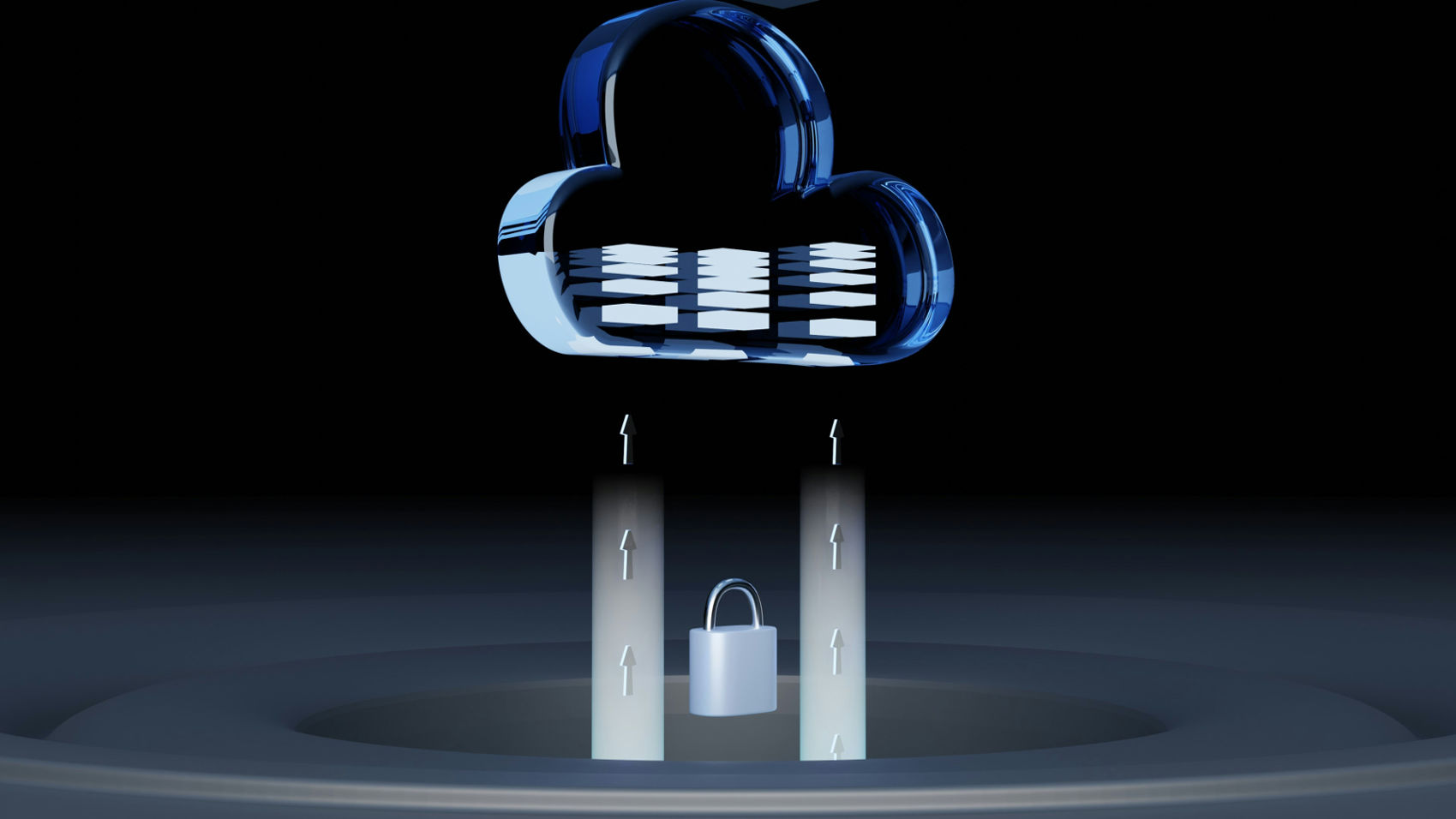 Security Updates
Security UpdatesA Guide to Cloud Network Technology: Benefits and Types
Unlock the potential of cloud network technology for seamless connectivity. Learn and scale solutions that drive business innovation and growth via...
 Security Updates
Security UpdatesAffordable Managed IT Services for Small Businesses
Explore top-managed IT services for small businesses to boost efficiency and security. Get expert insights and practical tips to optimize your IT o...
 Security Updates
Security UpdatesSecure Your Network with Gateway Security Solutions
Explore the essentials of gateway security: learn about its importance for network protection and best practices to safeguard your digital assets e...
 Security Updates
Security UpdatesDisaster Recovery Testing: Ensure Business Continuity
Explore effective disaster recovery testing strategies in this guide to maintain business continuity, prevent data loss, and minimize downtime duri...
 Security Updates
Security UpdatesMaximizing Security: Vulnerability Management Lifecycle
Explore the complete guide to the Vulnerability Management Lifecycle to boost your cyber resilience and secure your business IT infrastructure effe...
 Security Updates
Security UpdatesYour Network with Endpoint Security Management
Explore our comprehensive guide on Endpoint Security Management to understand its importance, how it works, and best practices for robust network s...
 Security Updates
Security UpdatesEnsuring Security Compliance: Tips, Insights & Strategies
Discover the essentials of security compliance, its importance, frameworks, and tools. Learn how to protect data and meet regulatory standards effe...
 Security Updates
Security UpdatesBoost Your Security with Internal Penetration Testing
Dive into internal penetration testing with our in-depth guide. Learn the essentials, techniques, and best practices to fortify your cybersecurity ...
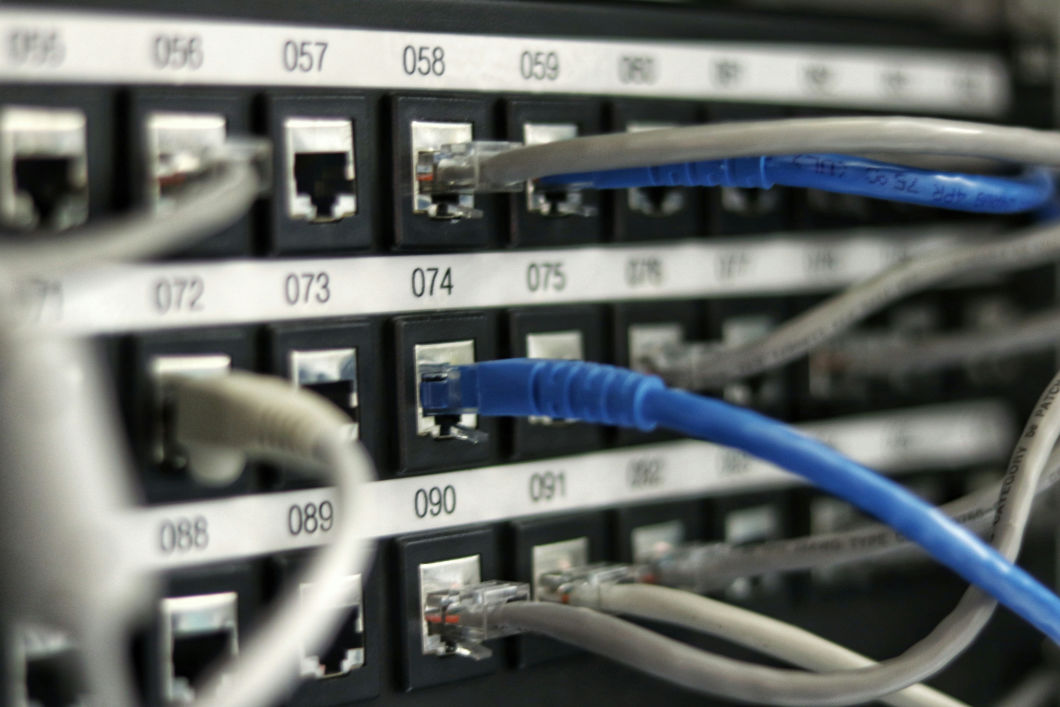 Security Updates
Security UpdatesEgress vs Ingress: A Guide to Data Traffic Management
Understand Egress vs Ingress in data management. Learn and explore their roles, traffic analysis, risks, and best practices for network and cloud s...
 Security Updates
Security UpdatesPrevent Credential Harvesting to Protect Your Precious Data
Understand credential harvesting. Learn how it works, common techniques, its impact, and strategies to prevent and mitigate attacks to secure your ...
 Security Updates
Security UpdatesSecure Your Big Data: Top Solutions for Data Security
Protect your valuable data with our robust big data security solutions. Learn about the threats and Safeguard against cyber threats and ensure comp...
 Security Updates
Security UpdatesSecure Your Network with Advanced Management Solutions
Explore the details of comprehensive network security management: Learn key strategies, best practices, and tools to safeguard your digital environ...
 Security Updates
Security UpdatesGuide to On-Path Attacks: Protecting Your Cybersecurity
Learn about on-path attacks in this comprehensive guide, exploring definitions, types, consequences, and key prevention strategies to safeguard you...
 Security Updates
Security UpdatesExploring Managed Cloud Services: A Comprehensive Guide
Dive into the Managed Cloud Services with our in-depth guide. Explore benefits, types, and best practices to enhance your business's cloud strategy...
 Security Updates
Security UpdatesComprehensive Guide to Ubiquitous Computing: Impact & Future
Explore the details of ubiquitous computing, from its core concepts and layers to its societal impact, key technologies, applications, and future p...
 Security Updates
Security UpdatesClone Phishing Explained: Detection and Prevention Guide
Discover how clone phishing works and its impact. Learn effective strategies to identify, prevent, and respond to these sophisticated email threats...
 Security Updates
Security UpdatesHow to Secure Your Business with Cyber Security Insurance
Explore the essentials of Cyber Security Insurance, covering its importance, types of coverage, benefits, and considerations for businesses in the ...
 Security Updates
Security UpdatesEfficient Data Spooling Solutions For Streamlined Operation
Learn How To Efficiently Manage And Store Your Data With Our Reliable Data Spooling Services. Keep Your Information Organized And Accessible With T...
 Security Updates
Security UpdatesMaximizing Compliance & Risk Management: Expert Strategies
Learn how to ensure business success with effective compliance and risk management strategies. Explore definitions, differences, frameworks, and ch...
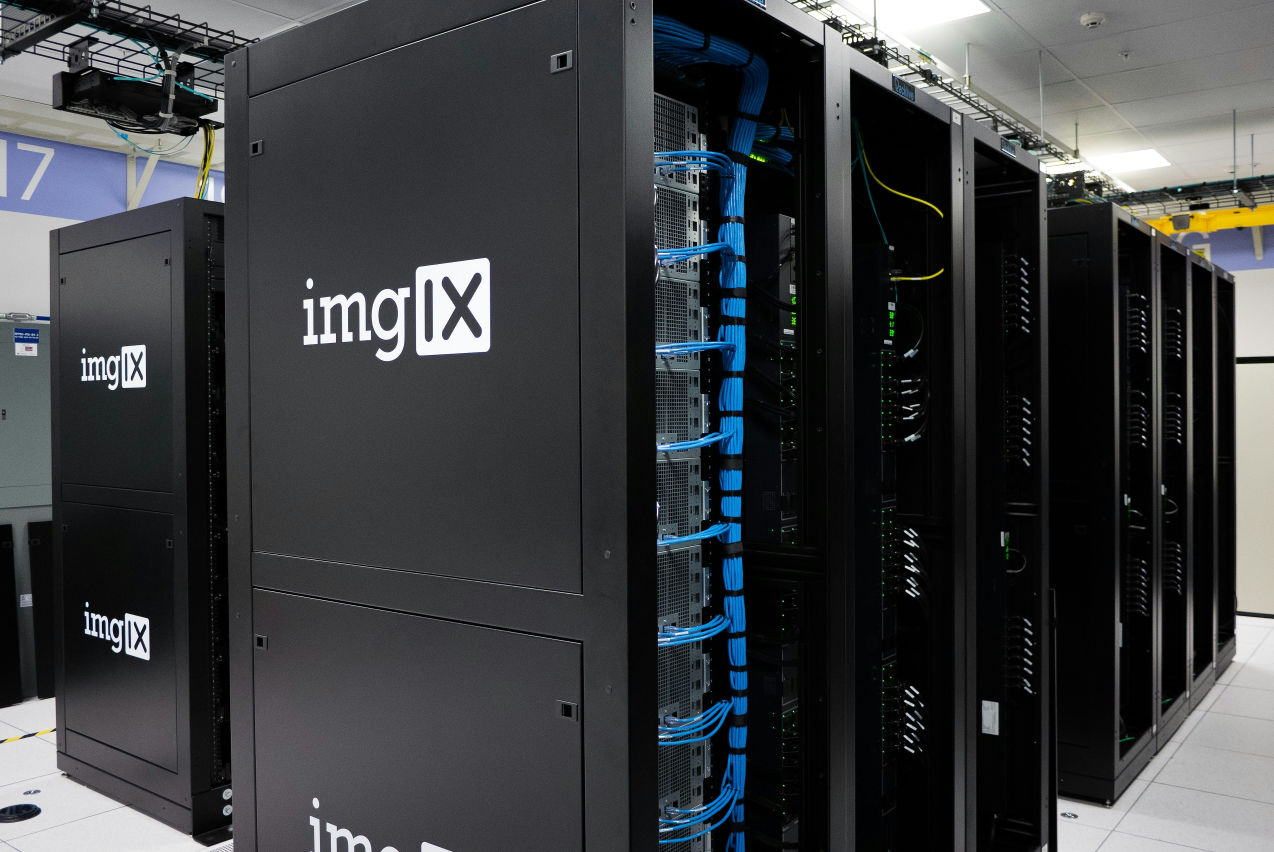 Security Updates
Security UpdatesUnderstanding MDF vs IDF: Key Differences & Benefits
Explore the crucial differences and examples between MDF and IDF in networking, understanding their roles, functions, and impact on network infrast...
 Security Updates
Security UpdatesRedZone Wins CRN's Top Security 100 & MSP 500 Awards 2024
RedZone Technologies earns CRN's Security 100 & MSP 500 Awards, affirming its leadership and innovative approach in the cybersecurity and IT manage...
 Security Updates
Security UpdatesJames Crifasi Speaks on Cybersecurity at Tech Conference
Join James Crifasi, CTO & COO of RedZone Technologies, at the Tech Conference as he explores cybersecurity's role in driving business growth and ad...
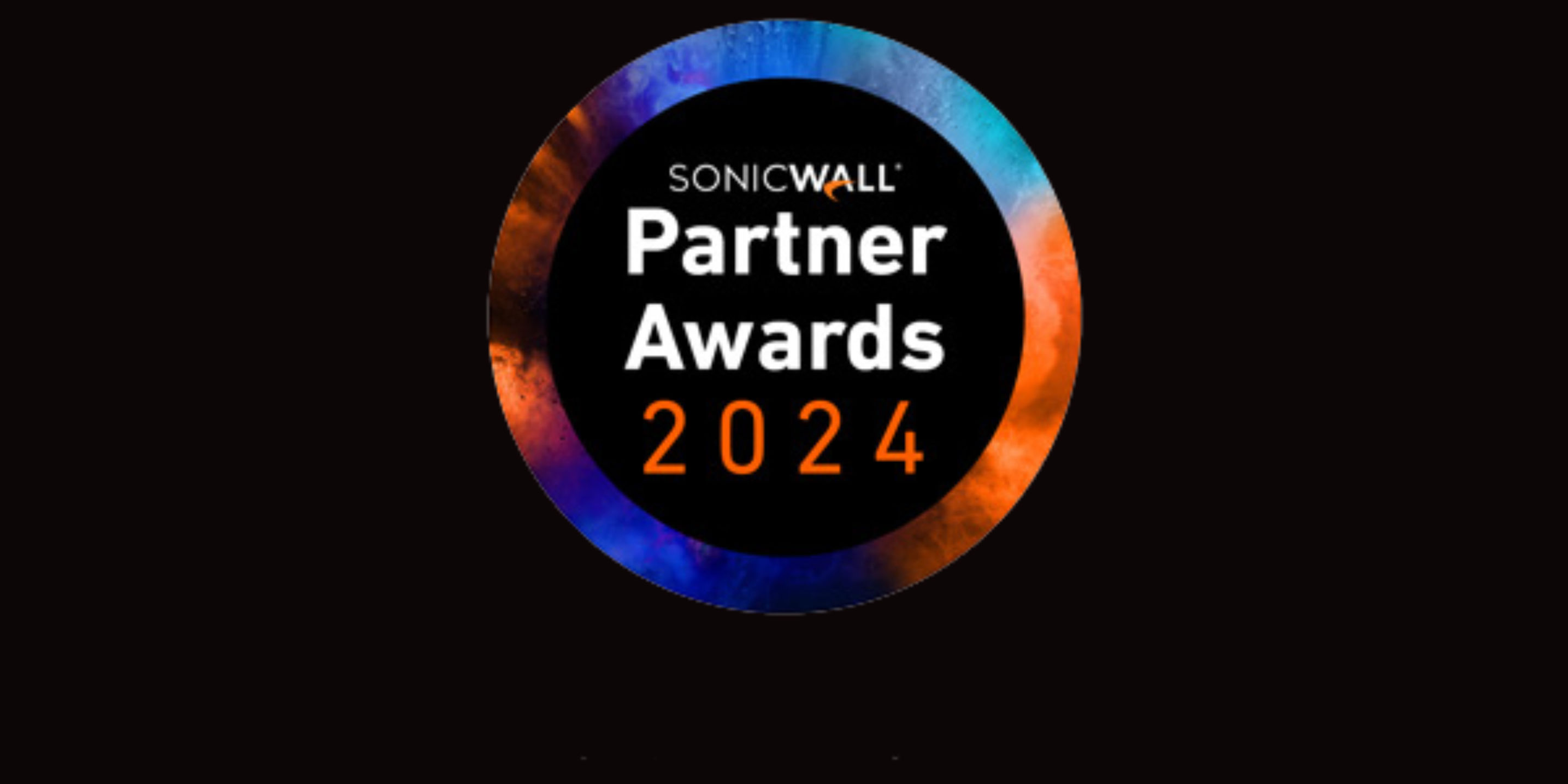 Security Updates
Security UpdatesRedZone's James Crifasi Wins SonicWall's Technical Hero Award
CTO James Crifasi of RedZone Technologies earns SonicWall's Technical Hero of the Year, exemplifying unparalleled dedication to cybersecurity and I...
 Security Updates
Security UpdatesHow to Encrypt Email in Outlook
Learn how to encrypt email in Outlook with our step-by-step guide. Secure your messages using S/MIME, Office 365 Encryption OME, and add-ins for pr...
 Security Updates
Security UpdatesWhat Is Security Monitoring? Importance and Tools
Explore the importance of security monitoring, its key roles, types, and how it protects organizations against threats, ensuring compliance and pro...
 Security Updates
Security UpdatesServer 2012 R2 End of Life: Implications and Next Steps
Learn about Server 2012 R2 end of life: Understand its impact, key dates, risks post-EOL, and explore upgrade options and migration strategies for ...
 Security Updates
Security UpdatesProtect Personal Data: Smishing and Phishing Prevention
Know how to identify and protect against smishing and phishing attacks. Learn the techniques, types, and preventive measures for personal and busin...
 Security Updates
Security UpdatesSmurf Attack Guide: Prevention & Detection Strategies
Explore prevention & recovery from Smurf Attacks: Understand DDoS defense, detection signs, and secure network practices in our detailed cybersecur...
 Security Updates
Security UpdatesWhat is a Bad USB Attack, and How Do You Prevent It?
Learn about Bad USB attacks, their various forms, and strategies for safeguarding devices. Learn how to mitigate risks with effective prevention te...
 Security Updates
Security UpdatesKey Differences Between DOS Attack vs DDOS Attack
Explore the key differences between DDoS vs DoS attacks, their types, impacts, and prevention strategies in our comprehensive guide to enhance cybe...
 Security Updates
Security UpdatesUnderstanding the Impact of a Ping of Death Attack
Explore the ins and outs of Ping of Death attacks. Understand how they work, their impact on networks, and strategies to prevent them to keep your ...
 Security Updates
Security UpdatesThe Power of the Human Firewall: Your First Line of Defense
Discover the critical role of the human firewall in cybersecurity, combining employee vigilance with technology to protect against cyber threats ef...
 Security Updates
Security UpdatesStateful Firewall vs. Stateless Firewalls: What's the Difference?
Learn the key differences between stateful and stateless firewalls and how they protect your network. Discover the right choice for your security n...
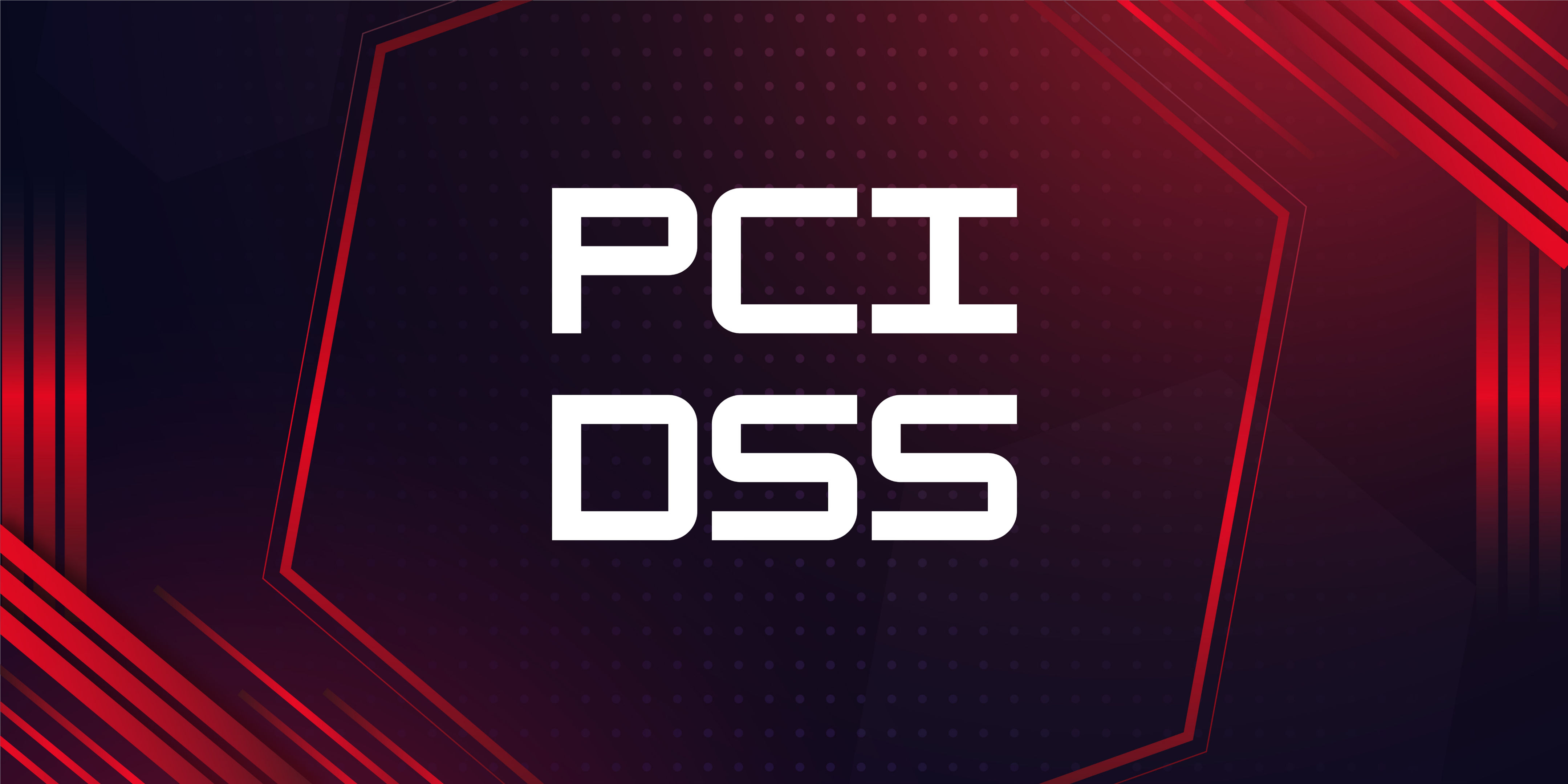 Security Updates
Security UpdatesUnderstanding the 4 Levels of PCI Compliance
Explore PCI DSS Compliance with RedZone: Key steps to protect card data and ensure secure transactions. Learn about compliance levels and tips for ...
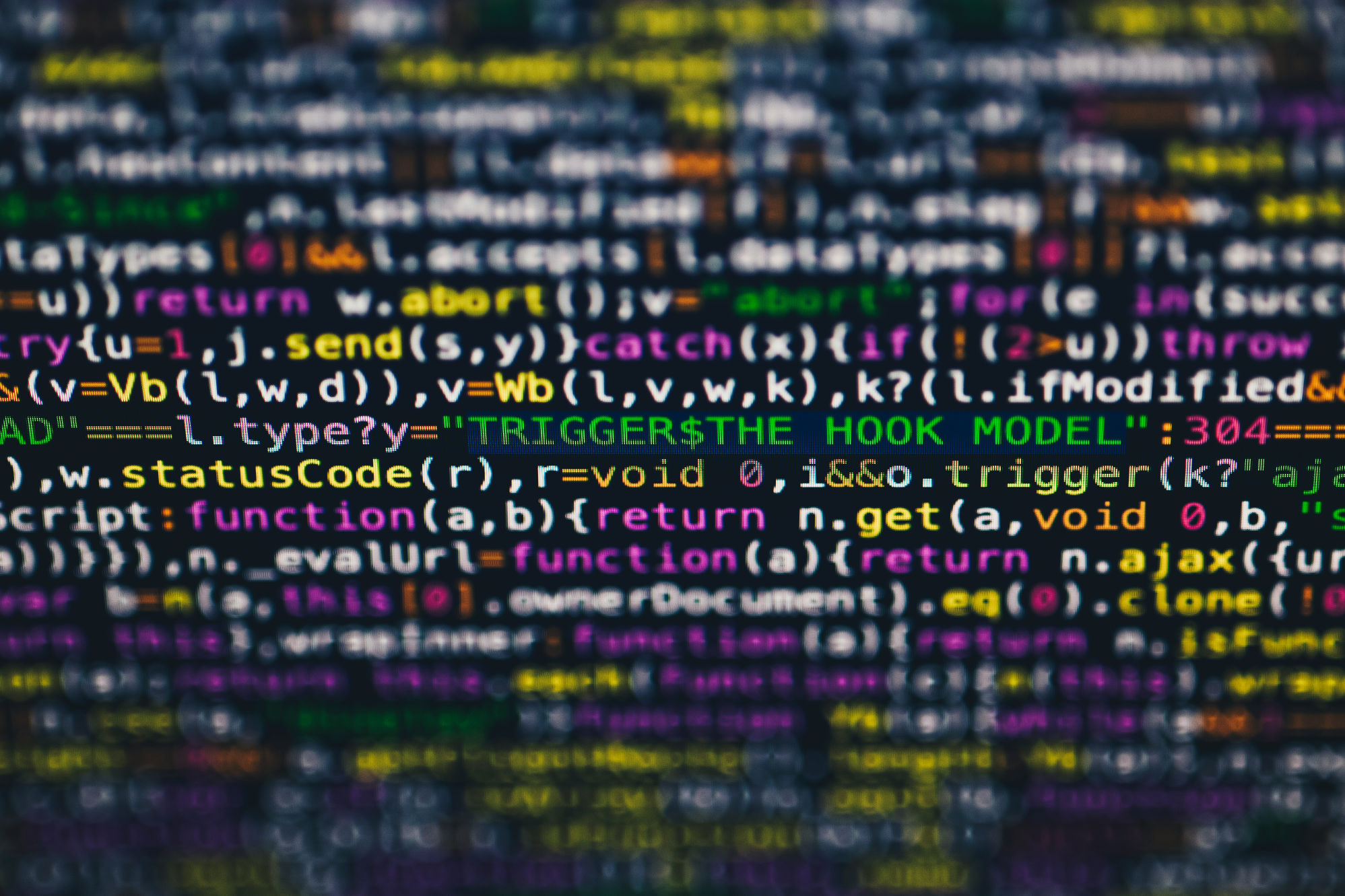 Security Updates
Security UpdatesWhat Is a Security Breach and How to Prevent Them
Learn how to effectively guard your business against security breaches with RedZone Technologies. Discover simple steps to keep your data safe and ...
 Security Updates
Security UpdatesUnderstanding Tailgating in Cybersecurity
Understand tailgating attacks in cybersecurity: what they are, how they work, and effective strategies for prevention to keep your business...
 Security Updates
Security UpdatesWhat is a Managed Service Provider and Its Benefits
Explore the role of Managed Service Providers (MSPs) in enhancing IT efficiency and cybersecurity for businesses, covering benefits, servi...
 Security Updates
Security UpdatesBreach Prevention: 5 Best Practices to Protect Your Data
Learn about data breaches: what they are, their impact, and how to prevent them. Explore best practices for securing your business against cyber th...






